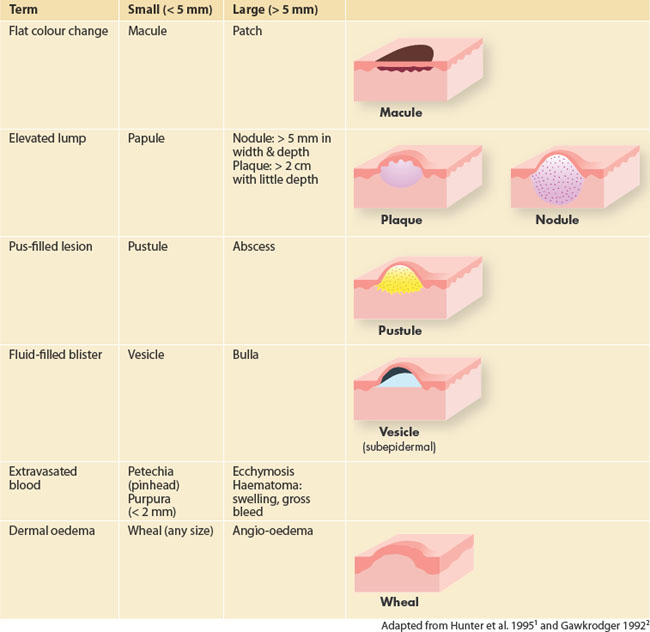chapter 42 Skin
DIAGNOSIS
TREATMENT PLAN
IMPORTANT PITFALLS IN SKIN MANAGEMENT
SPECIFIC SKIN CONDITIONS
ECZEMA
Eczema is the most common skin reaction. It is an inflammatory disorder and the term is interchangeable with dermatitis, although sometimes ‘dermatitis’ is used when the cause is external or exogenous (Box 42.1).
Contact or exogenous eczema
Constitutional or endogenous eczema
Atopic eczema
Atopic eczema can be likened to a slow-burning scrub fire. It is much more than a steroid-responsive dermatosis. Each patient needs to be managed with an appreciation of the causes, triggers and individual patterns of their disease.
The cause of atopic eczema is probably multifactorial: genetic, immunological and environmental.
Prevention
(See also Ch 55, Child health and development.)
Treatment
These approaches are directed towards young children, but are adaptable to all age groups.
 deep-sea cold water fish such as salmon, sardines, herrings, mackerel or fish oil capsules 1000 mg (adult dose: four daily)
deep-sea cold water fish such as salmon, sardines, herrings, mackerel or fish oil capsules 1000 mg (adult dose: four daily)





